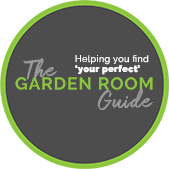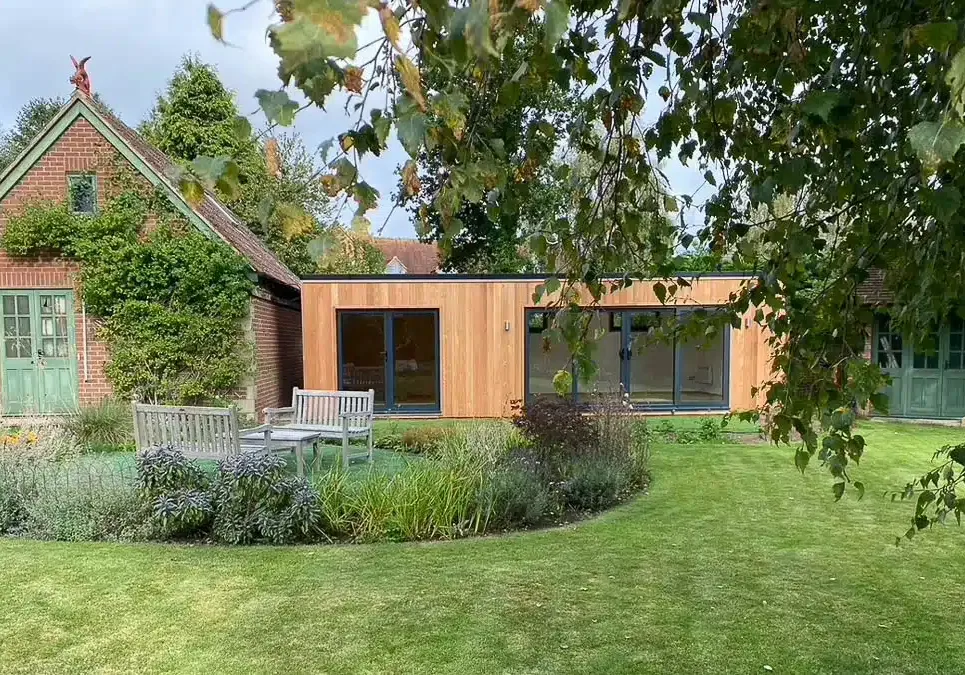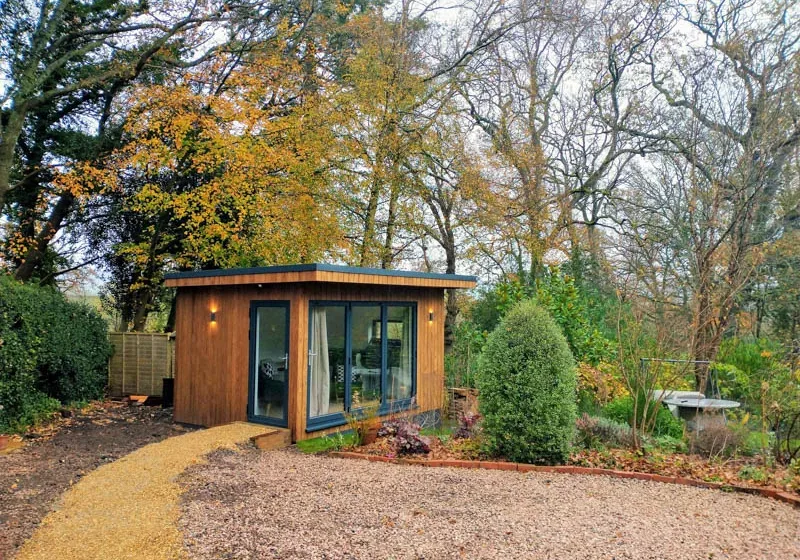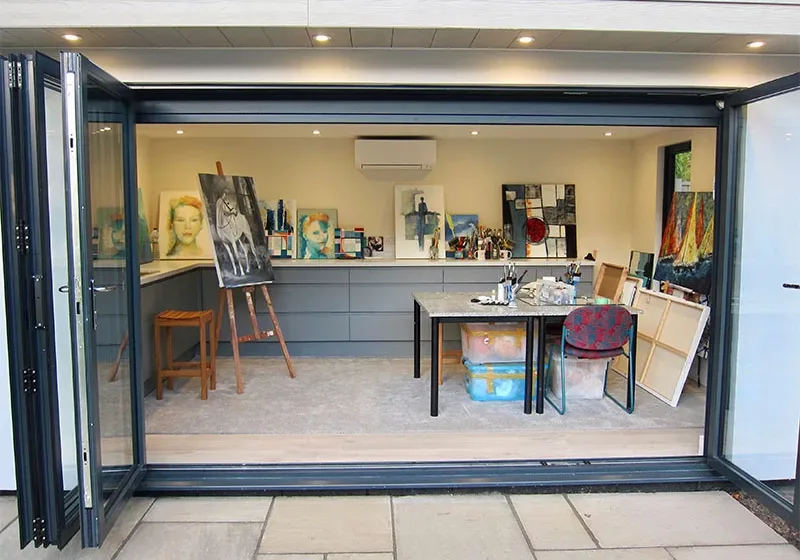Artists Studios
Garden studios are great places for artists of all types. You can have a lot of input into the layout of the building so that it works for you. You can choose the position of the windows for the most stable light and incorporate kitchen areas for cleaning up your tools and shower rooms to save breaking off to return to the house.
Your Ideal Creative Space Awaits – Find Companies Who Work in Your Area
Utilise our directory tool to find companies working in your county and specialising in crafting the perfect creative studio. Share with us the features you desire in your studio, along with any site-specific challenges, and we'll present you with a selection of companies capable of turning your vision into reality.
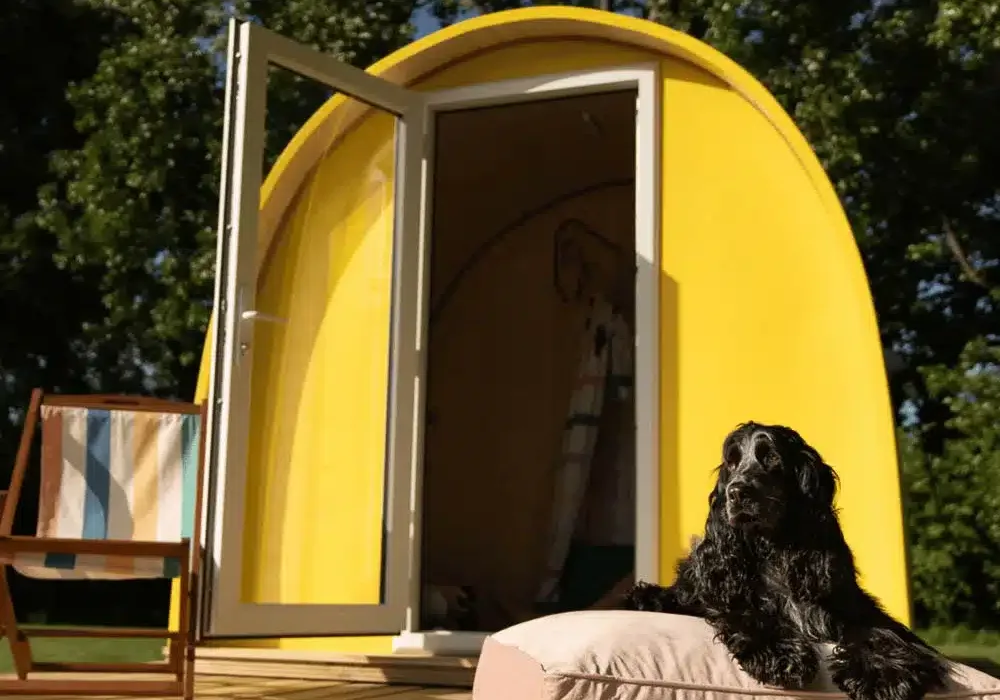
Hully Pods
If you are looking for a garden pod that you can use as a home office, gym, creative studio and much more then you will want to explore the Hully Pod range The three Hully Pod models each offer an attractive price point and numerous options to personalise your pod. Available for delivery across mainland UK, Hully Pods are delivered fully assembled and are lifted into position using the lorry’s crane. They require a firm, flat, level site and come complete with a 16A electrical hookup, enabling quick and easy usage.
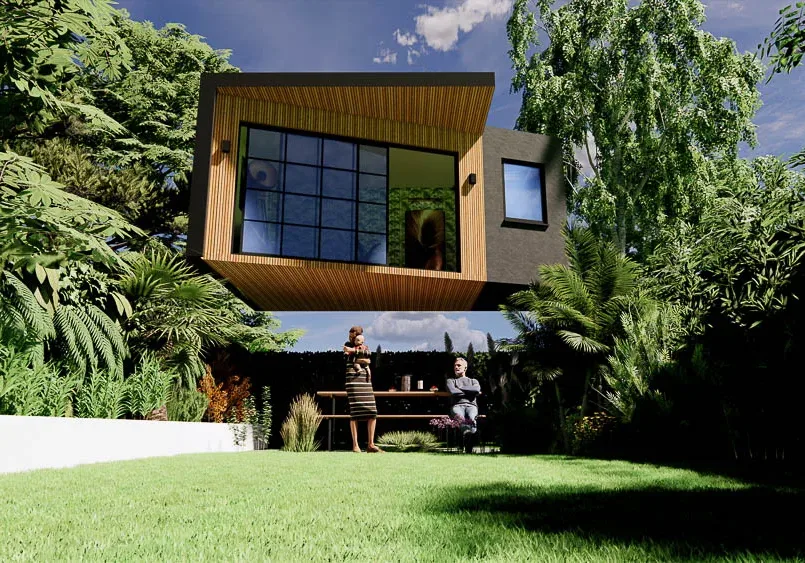
A ROOM IN THE GARDEN Unveils World’s First Gravity-Defying Garden Rooms
A ROOM IN THE GARDEN, a pioneer in bespoke garden room designs, is thrilled to announce the launch of an extraordinary innovation in outdoor living spaces: the Gravity-Defying Garden Room. This groundbreaking concept introduces a garden room that levitates a few inches above the ground, creating an illusion of floating on air, a first of its kind globally.

Understanding the regulations that are relevant to your garden building project
Understanding the regulations that are relevant to your garden building project Published: 25 March 2024Reading Time: 1 minute 22 secondsGuest Post by: Garden Affairs There are various rules and regulations from different authorities that can influence how to proceed with your garden building project. Typically the first consideration is whether Planning Permission is required and […]
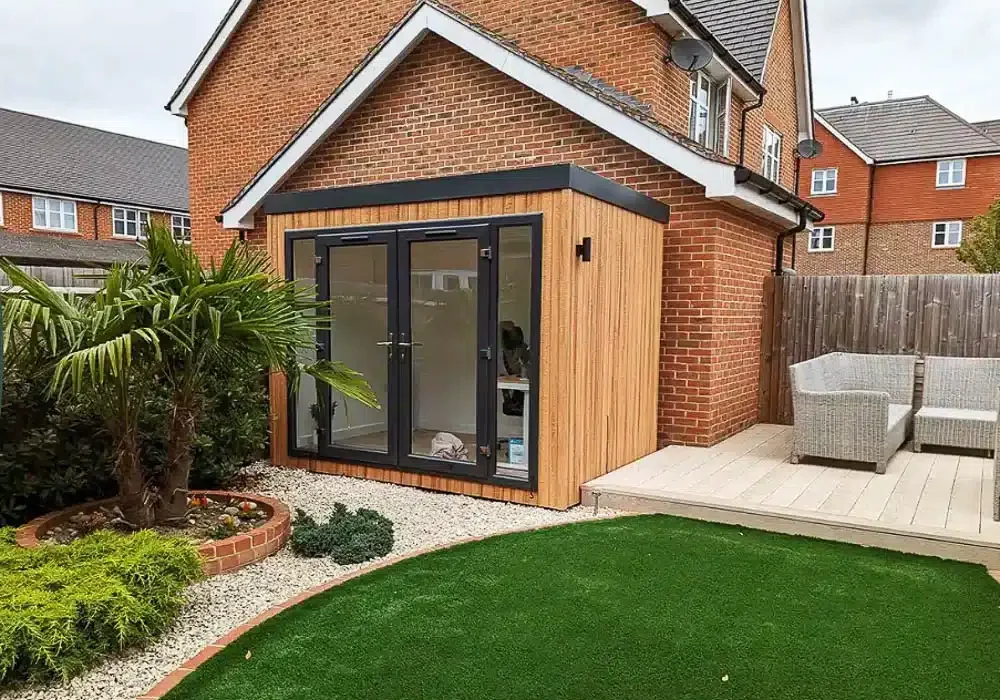
Pent Haus Self-Build Garden Room Kits
Pent Haus offers self-build garden room kits, granting customers significantly more flexibility in size, door and window configurations, and internal finishes compared to other DIY options on the market. They have streamlined the buying process with an online configurator, enabling you to customise your garden room kit in just three minutes. With a delivery time of only three weeks, two people can easily install the building in just three days.
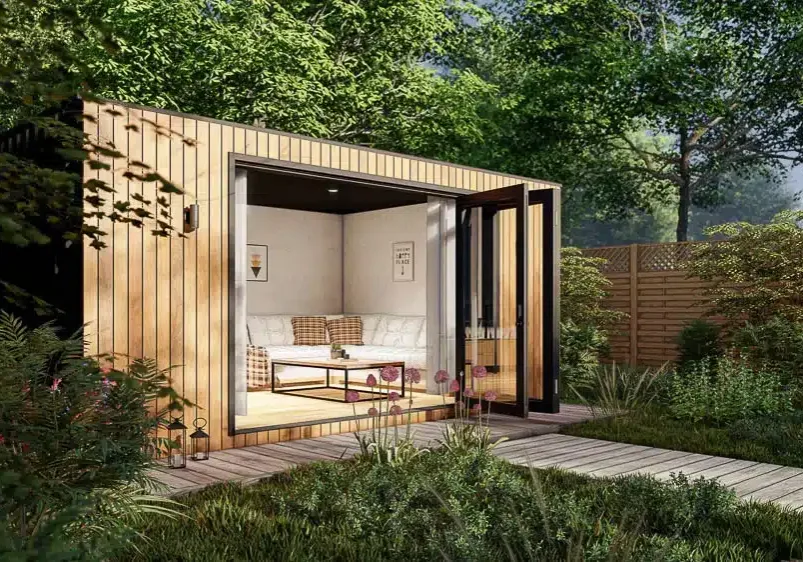
Into The Garden Room
Into The Garden Room offers a range of well-specified garden room options that can be tailored to your choices. They also offer bespoke design services that allow them to create tailor-made designs.
Interestingly, Into The Garden Room also offers the option of a garden spa which can incorporate a sauna or steam room.
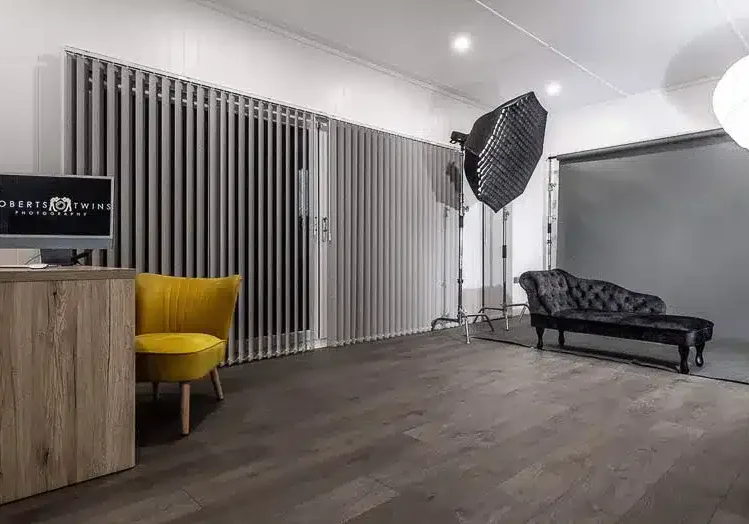
3m tall garden photography studio
A 7m x 4m garden photography studio by Cosy Garden Rooms. Designed to accommodate the unique requirements of the business, a professional yet comfortable workspace has been created.
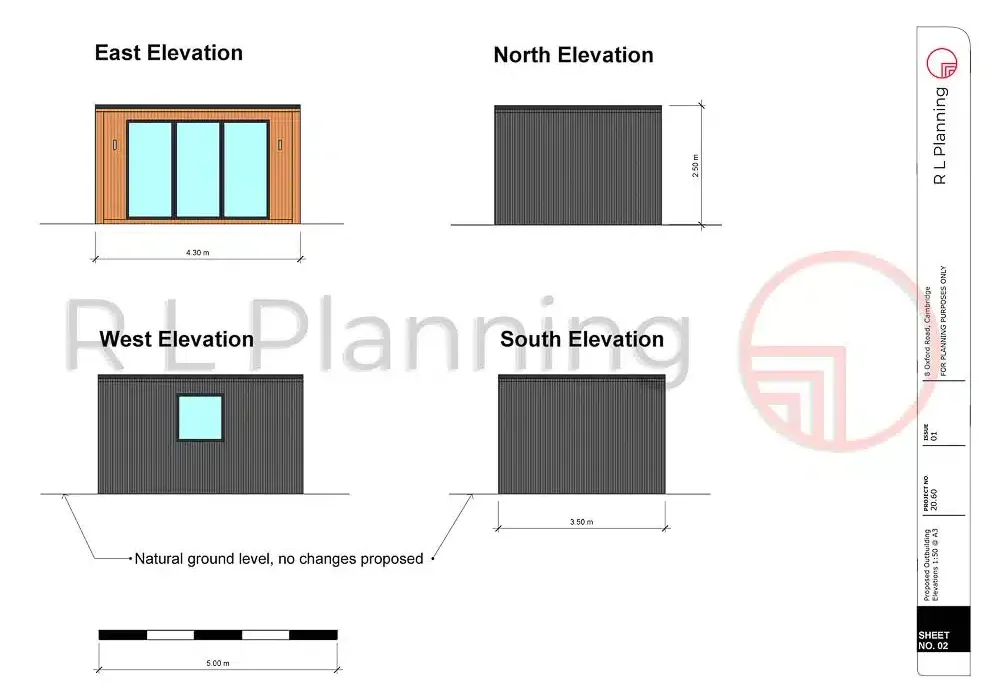
R L Planning
Discover how R L Planning transforms your garden room vision into reality. A planning consultancy specialising in garden rooms & annexes, they manage complex regulations and ensure successful outcomes. From obtaining Lawful Development Certificates to advising on ambitious designs, their expertise covers every step of your project, backed by over 25 years of experience in both public and private sectors. Access their efficient online service across England for a seamless planning experience.
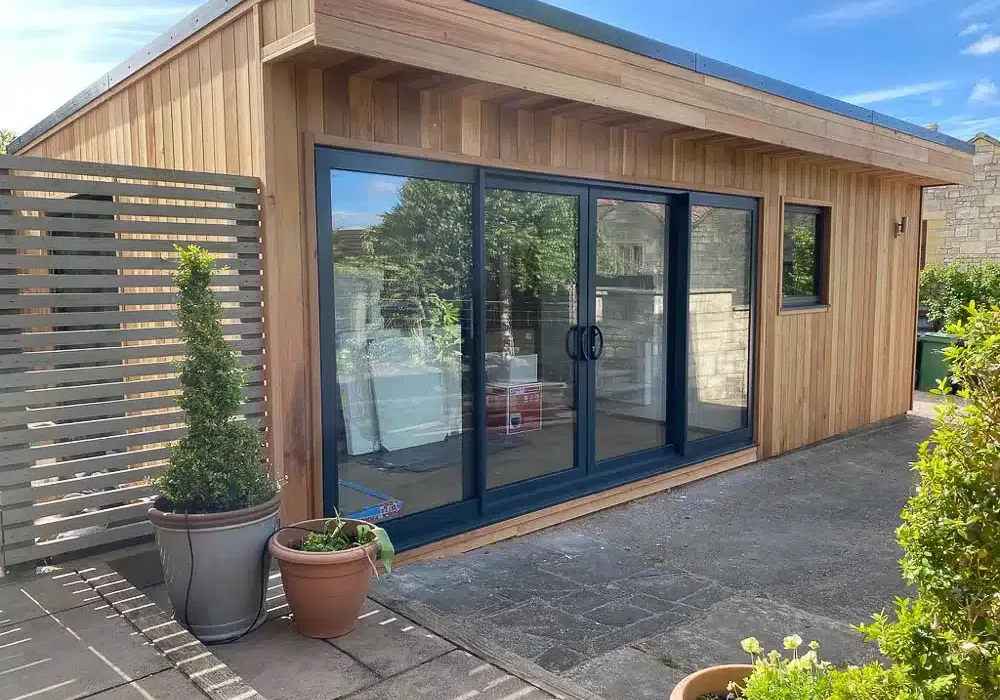
For Business or Pleasure and Everything in Between…
Crusoe Garden Rooms Limited tailors each of their designs to meet the customer’s unique requirements. Whether it’s incorporating acoustic insulation for a soundproof music room, crafting a dual-purpose home office and gym, or designing a garden annex complete with a kitchen and shower room for independent living, their bespoke approach is evident in every project. As a family-run business operating across the UK, they specialise in cedar-clad designs featuring plastered and decorated interiors. These rooms are not only aesthetically pleasing but also comfortable for use every day of the year.
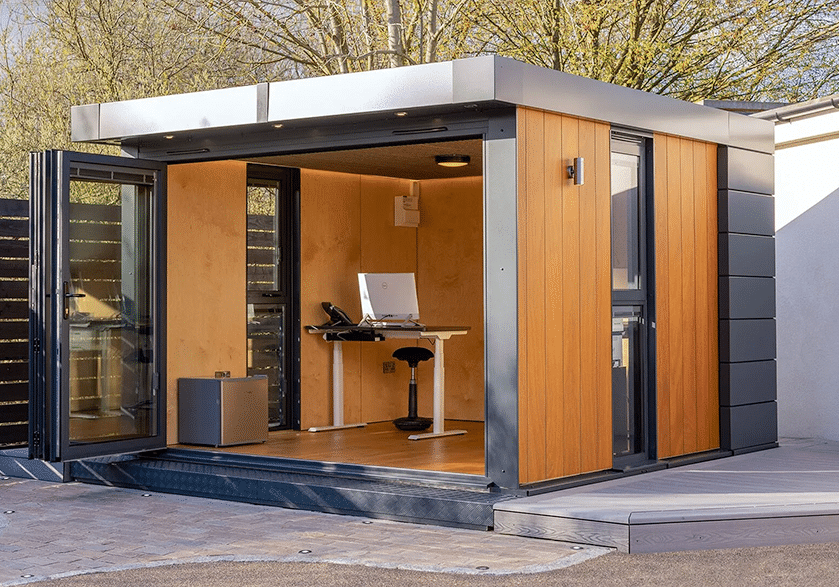
Kennedy Garden Retreats
Kennedy Garden Retreats have caught our eye with their range of modular garden rooms that can be personalised around each customer. Their Windsor design particularly stands out amidst contemporary garden room options, thanks to its unique exterior finishes and meticulous detailing.
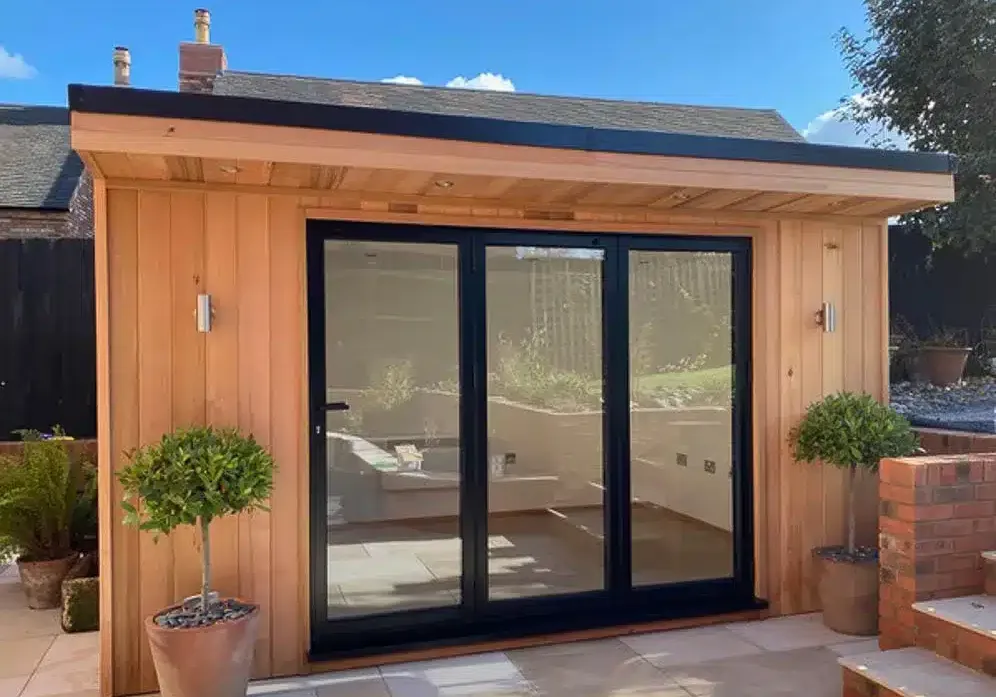
The Crusoe Pad: A Well-Specified Garden Room
At 3.6m x 2.8m, the Crusoe Pad is a garden room that fits comfortably in most gardens without overpowering the space. It’s large enough for a variety of uses, from a home office to an art studio, or even a personal gym.
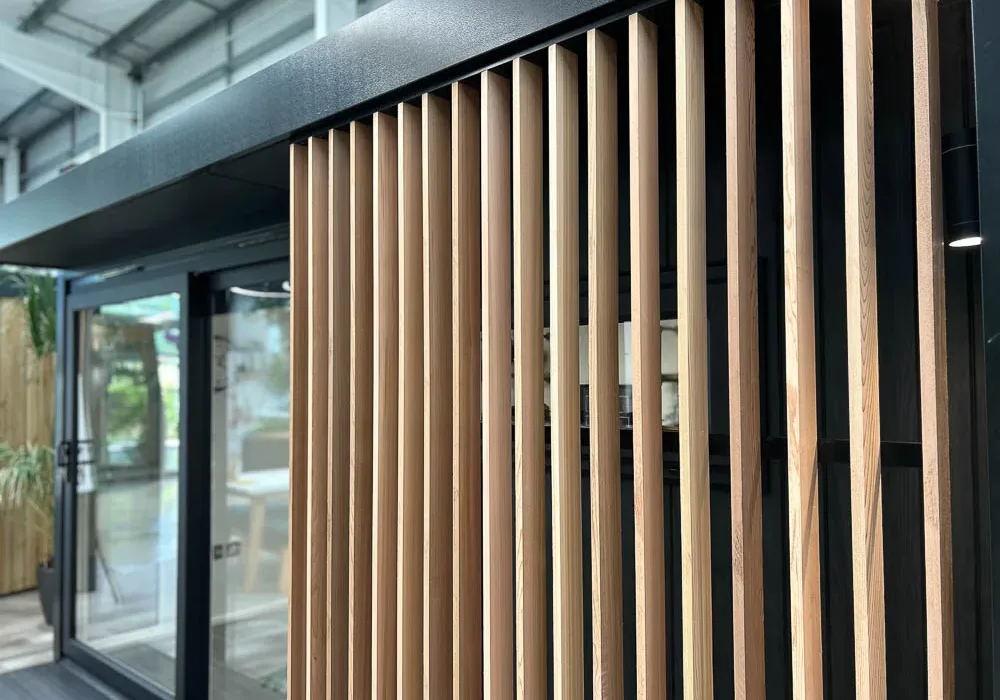
Green Retreats unveils exciting new features
Green Retreats continues to lead the way in innovation with the introduction of several new customisable design features on display at their Wescott showroom. To celebrate the launch of their new features, Green Retreats is having an Innovation event for the whole of October with has a special offer on all garden room orders with an installation before March 2024. Visit their Buckinghamshire showroom to see the latest innovations for yourself, or contact their Sales & Design Team to find out what offers can apply to your garden room project.
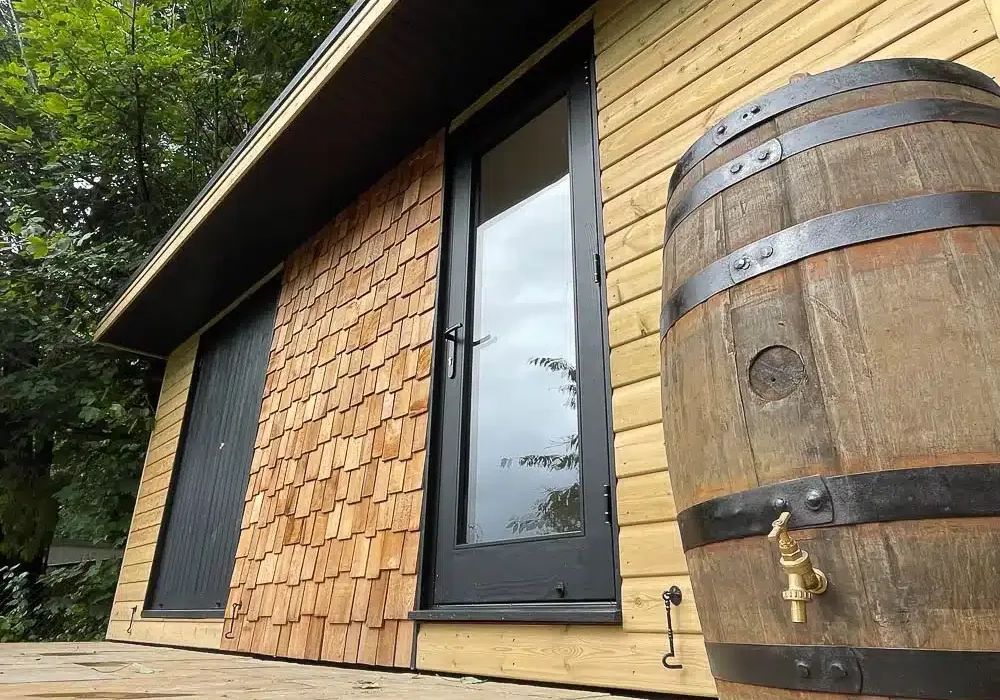
Rustic Realities
For those seeking a garden room that perfectly merges contemporary style with rustic detailing, look no further than Rustic Realities.
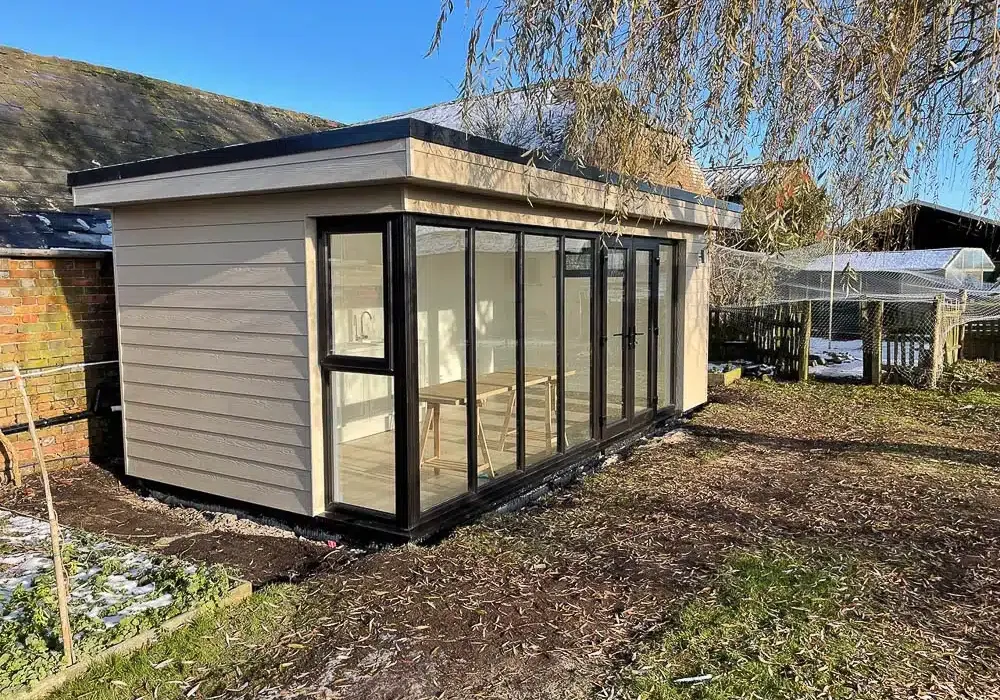
Garden art studio with kitchen
For creatives, having a dedicated space to work on projects without the need to clean up at day’s end is invaluable. The luxury of a space tailored to your unique needs, allowing for custom glazing arrangements that provide perfect lighting and frame garden views, and offering storage for materials is truly a dream. With Executive Garden Rooms, this dream is attainable.
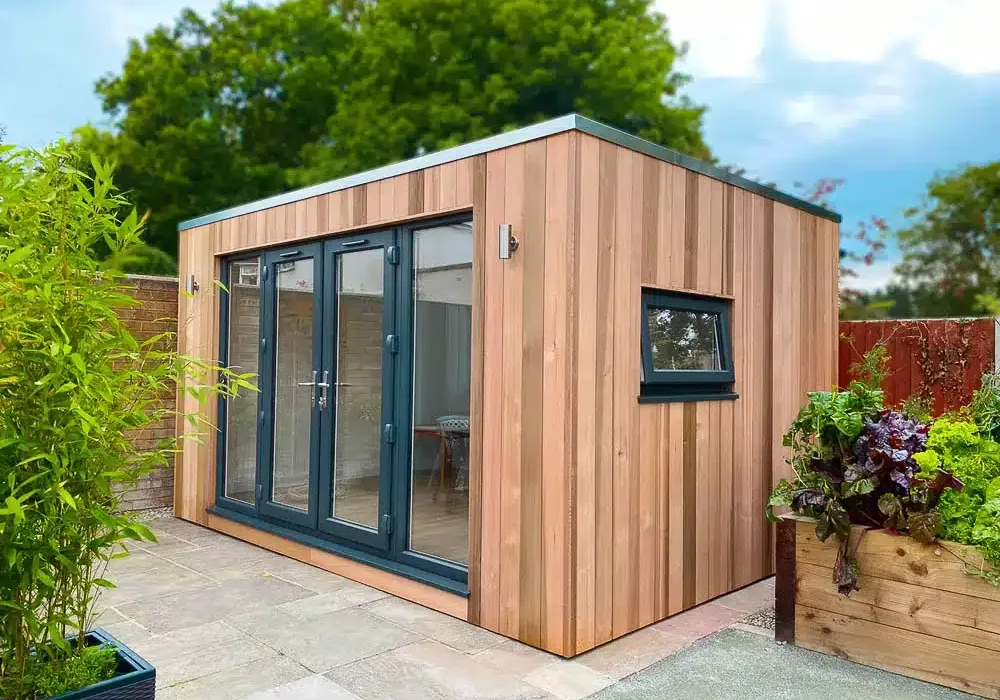
Transparently priced Sanctum Garden Studios
Sanctum Garden Studios offers four distinct garden room ranges, balancing functionality, aesthetics, and value for money.
They are transparent about their building costs, listing the prices for the different ranges and size options on their website. These prices include the foundation system, building installation, and VAT. The only extra expense, as Sanctum Garden Studios makes clear, is the final electrical connection between the studio and your house, which you would coordinate with a local electrician. Such transparency ensures buyers face no unexpected surprises.
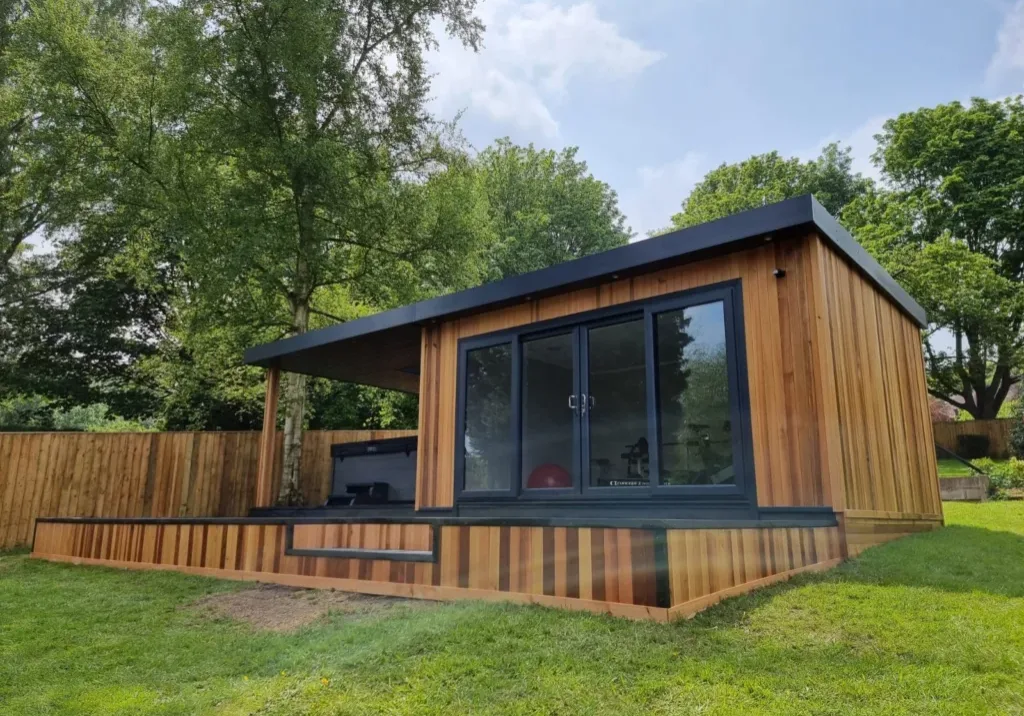
Cosy Garden Rooms
Based in the Midlands, Cosy Garden Rooms designs and builds insulated outdoor rooms for clients across the country. Where many competitors customise their standard designs, the Cosy Garden Rooms team believes in a personalised touch. Each room they build is custom-made, and designed around the requirements of the client and the unique characteristics of their garden.
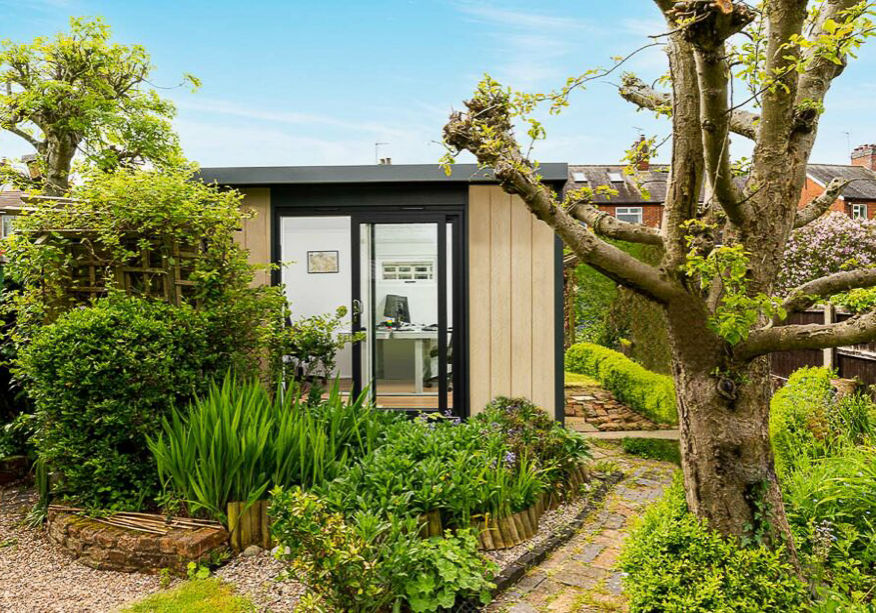
Basebox: Cost-effective garden rooms by Green Retreats
If you’re in search of a fully-insulated garden room that doesn’t break the bank, look no further than the Basebox range from Green Retreats. Basebox offers a unique blend of affordability and low-maintenance durability in a value-engineered garden pod. With ten versatile sizes to choose from, there’s a Basebox to suit every garden.
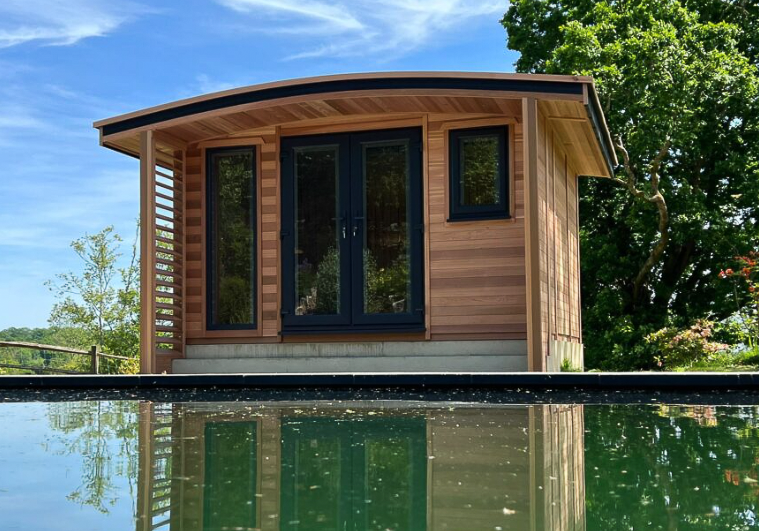
The Curved range by Warwick Buildings
Warwick Buildings offers several unique designs for customers looking to extend their living space with an outdoor room. One of our favourites amongst their portfolio of designs is the Curved Range – a charming alternative to the conventional flat roof, cubist designs on the market.
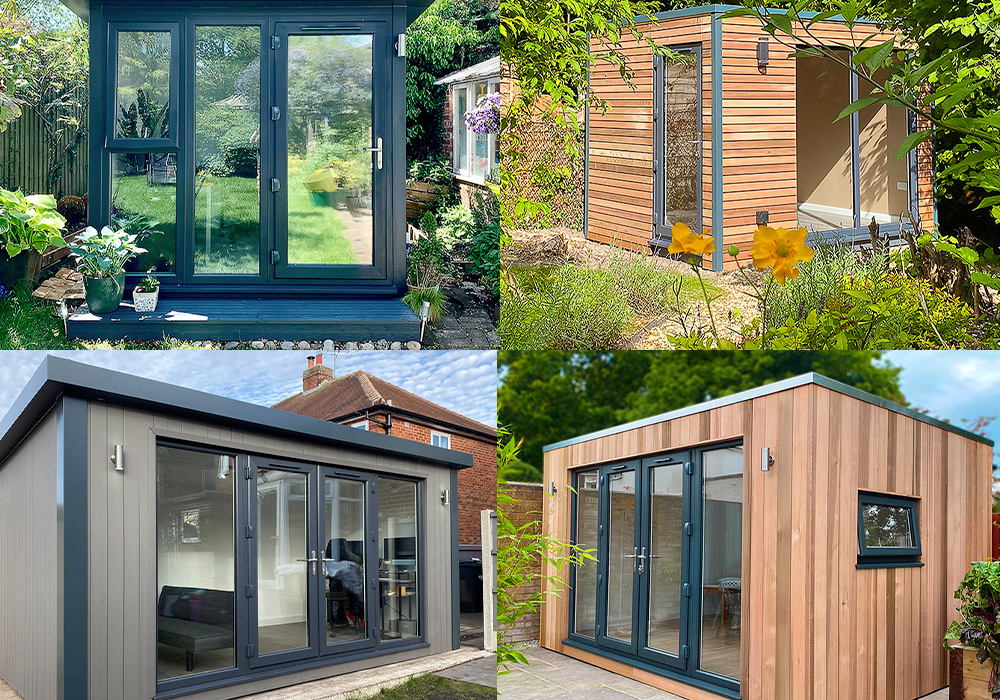
Sanctum Garden Studios offer four ranges
Sanctum Garden Studios offer four distinct ranges that cater to a variety of design styles and price points. Each building is manufactured in their workshops and delivered to site in sections for assembly by their in-house team. Typically this takes just two days.
As a special promotion for readers of The Garden Room Guide, any studio ordered for installation before the end of August 2023 will receive a £500 discount.
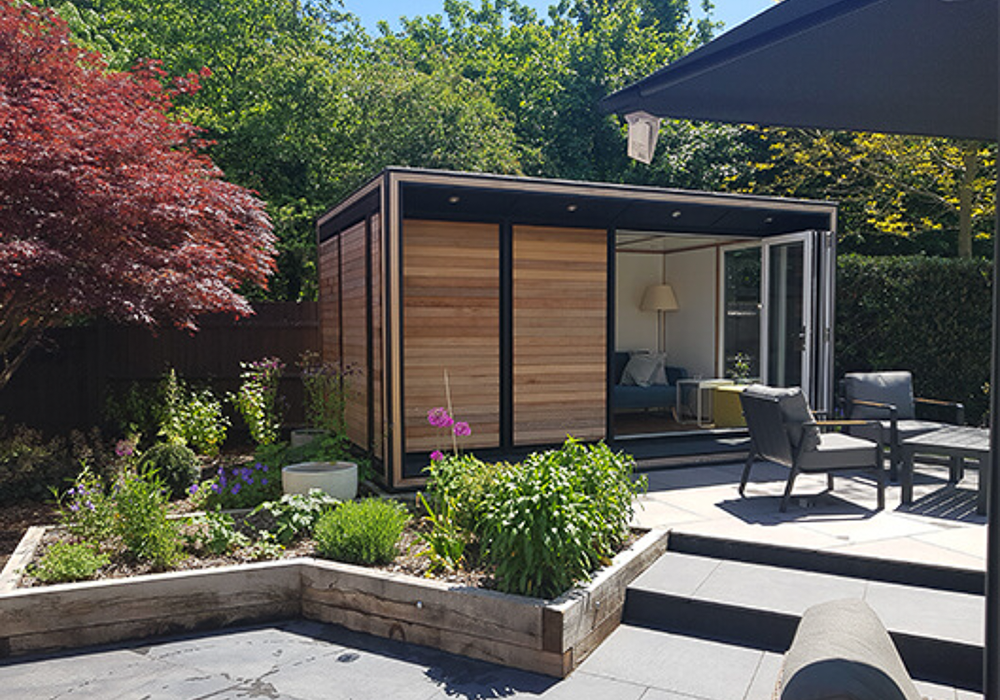
Ultra by Smart Modular Buildings
We’ve been exploring the Ultra range by Smart Modular Buildings. Standing out with its striking aesthetic of floating Cedar panels offset by a black framework, doors, and window frames, the Ultra range offers a blend of style and practicality.
The Ultra comes in more than 60 sizes with lots of flexibility to customise the layout of doors and windows.
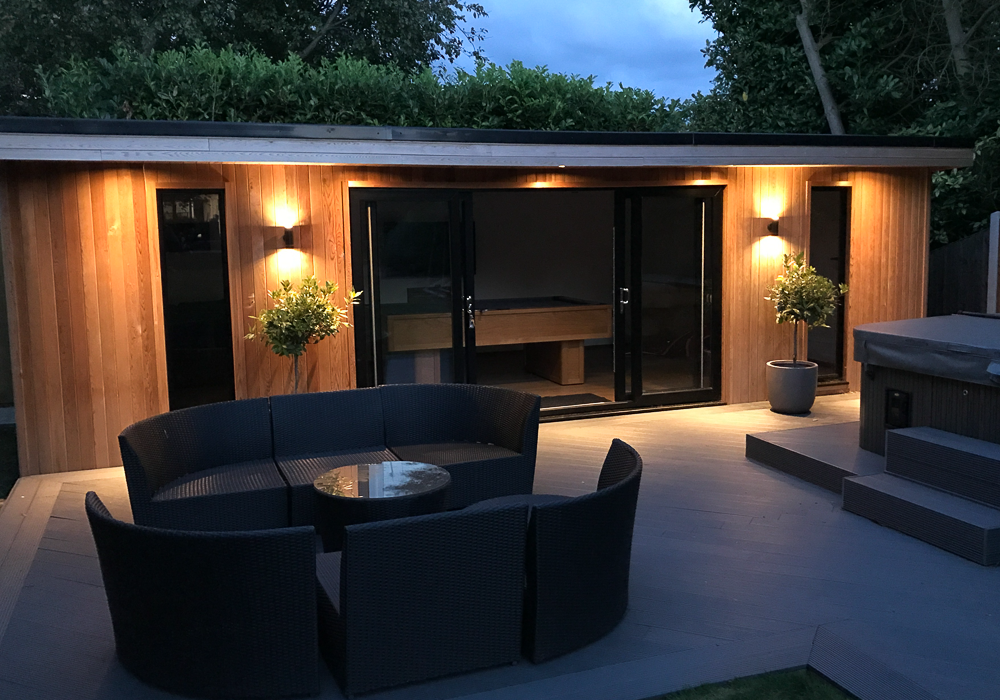
A Spotlight on Crusoe Garden Rooms
When considering a garden room, try to envision its versatility beyond the daytime hours. By incorporating exterior lighting into your design, you not only extend the functionality of your building into the evening but also create a stylish focal point in your garden. Crusoe Garden Rooms Limited understands this concept, exterior lighting is an integral part of their design process.
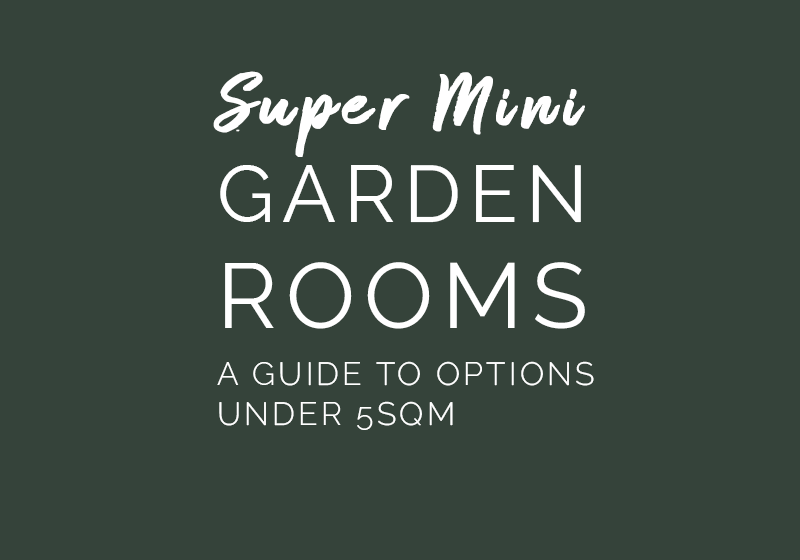
Super mini garden rooms
We have found 8 of the smallest garden room pods on the market. All are 1.8m/6ft deep or less but big enough for one worker.
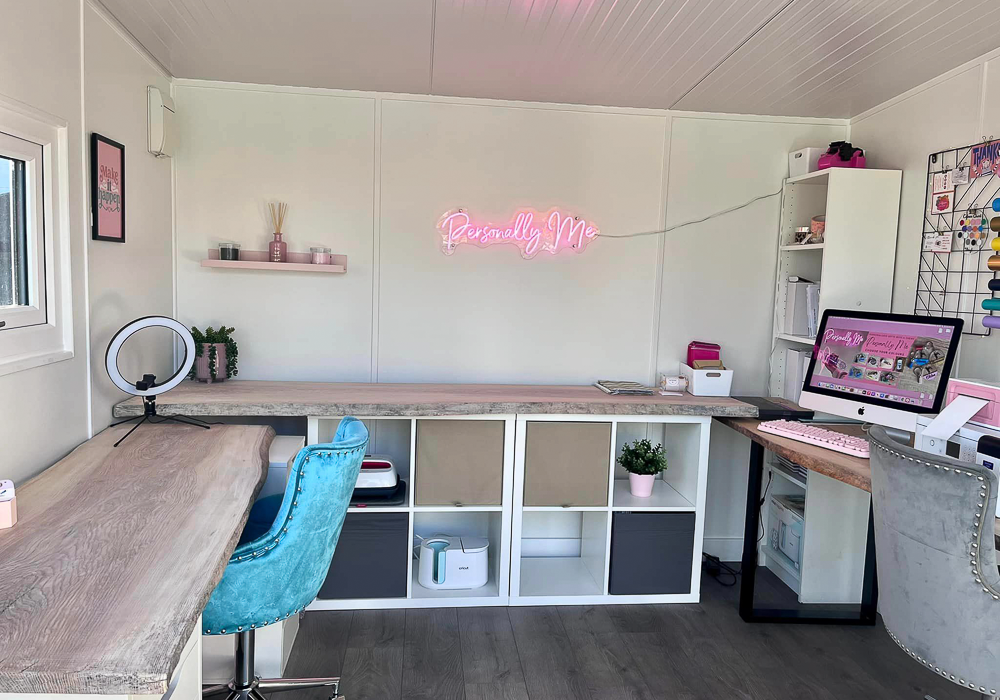
Garden studios are perfect for crafting
If you are a crafter, having a dedicated space to unleash your creativity can make all the difference. This 3m x 2.4m building by Sanctum Garden Studios is a great example of a garden craft room.
Unlike other types of garden buildings, such as sheds or summerhouses. Garden studios are fully insulated and double-glazed, meaning you can comfortably use them throughout the year. Regardless of the season or weather conditions, you can escape to your creative sanctuary and immerse yourself in your craft without limitations.
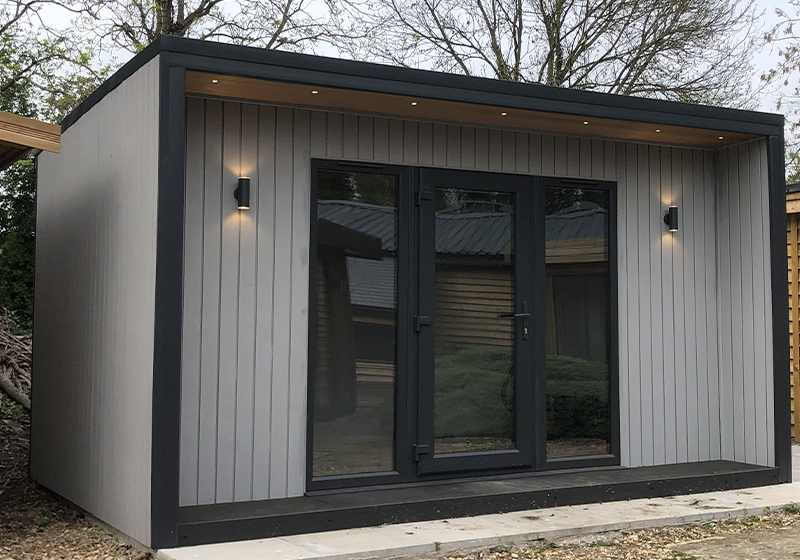
35+ years of experience goes into every Warwick Building
Warwick Buildings is one of the longest-established names in the garden room industry, having been in business for over 35 years. They offer a wide range of garden room designs, including both contemporary and traditional styles, as well as dual-pitched, mono-pitched and curved roof designs. Whether you’re looking for a space to work, relax, or entertain, Warwick Buildings has a garden room to suit your needs and style.
With sizes starting from 2.6m x 2.4m and prices from £9,000, Warwick Buildings’ garden rooms are an accessible and affordable way to expand your living space. They also offer flexible finance options to spread the cost of your building, making it even easier to achieve your dream garden room.
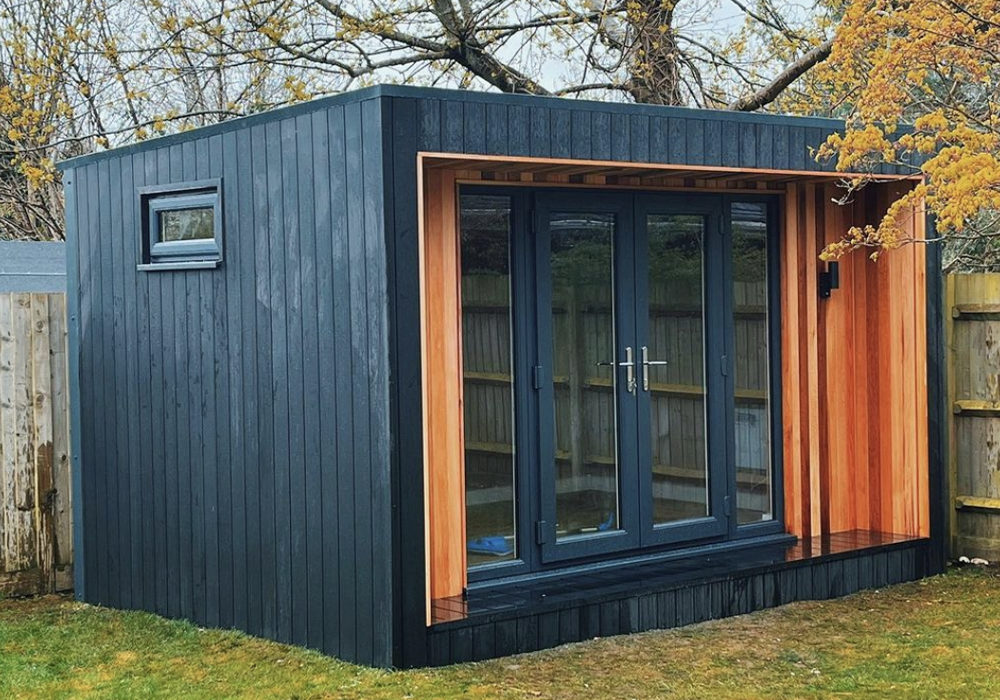
Composite and Cedar claddings work well together
A recent Instagram post by Modern Garden Rooms caught our eye, showcasing their Concave range garden room with a stylish combination of composite wood cladding and Western Red Cedar cladding. This project is an excellent example of how combining different cladding finishes can create a unique and striking look for a garden room. While many people choose one finish or the other, this project demonstrates the potential for mixing materials to create a more visually interesting and personalised aesthetic.
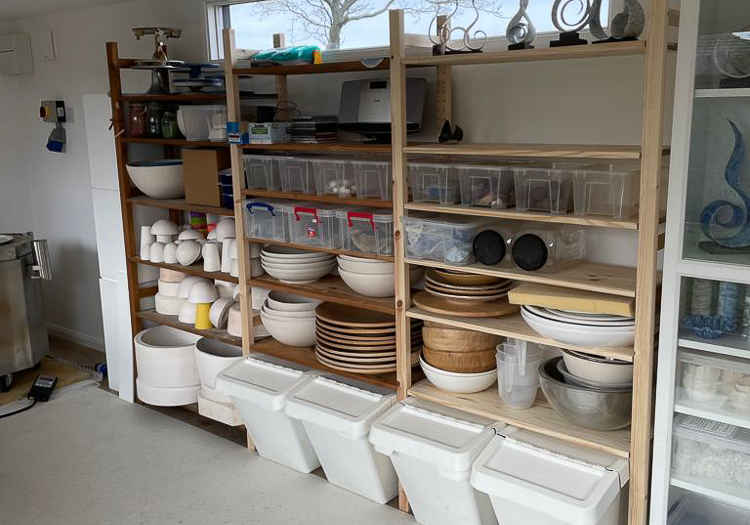
Made-to-measure studio for Yorkshire Ceramicist…
Tailor made 6m x 3m fully insulated, Cedar clad garden ceramics studio by Crusoe Garden Rooms Limited.
Windows have been cleverly positioned to frame the views. The studio also has well specified electrics with provision for a kiln.
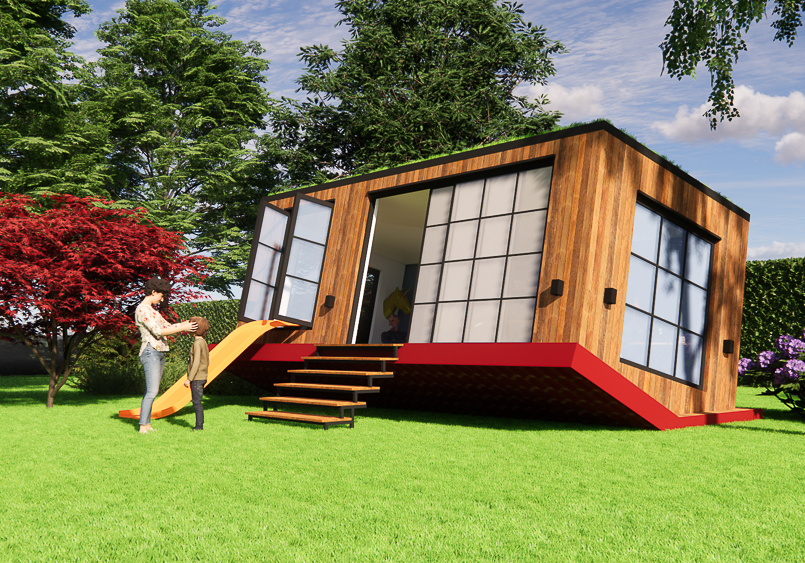
A ROOM IN THE GARDEN UNVEILS FIRST UPSIDE-DOWN GARDEN ROOM IN THE WORLD
A Room in the Garden unveil the worlds first upside down garden room. Check out this unique space that has so many potential uses.
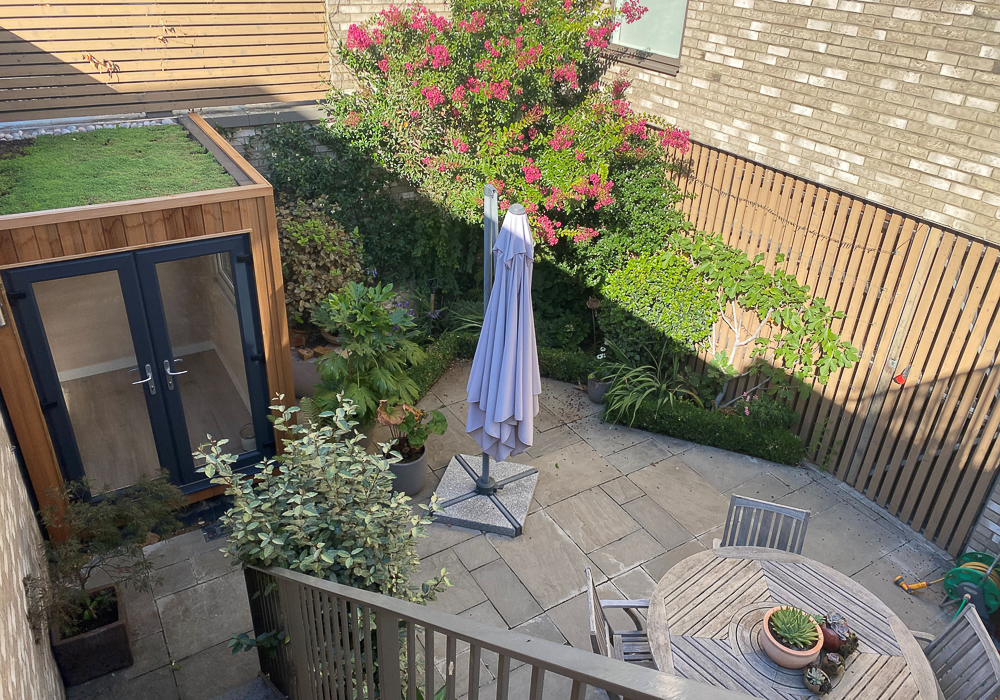
2m x 1.5m garden studio
You don’t require a lot of space to create a functional art studio, as this 2m x 1.5m pottery studio by AMC Garden Rooms proves. It could equally be used as home office.
Clever window and door choices make the pod feel bigger than it is, creating a naturally light, modern workspace.
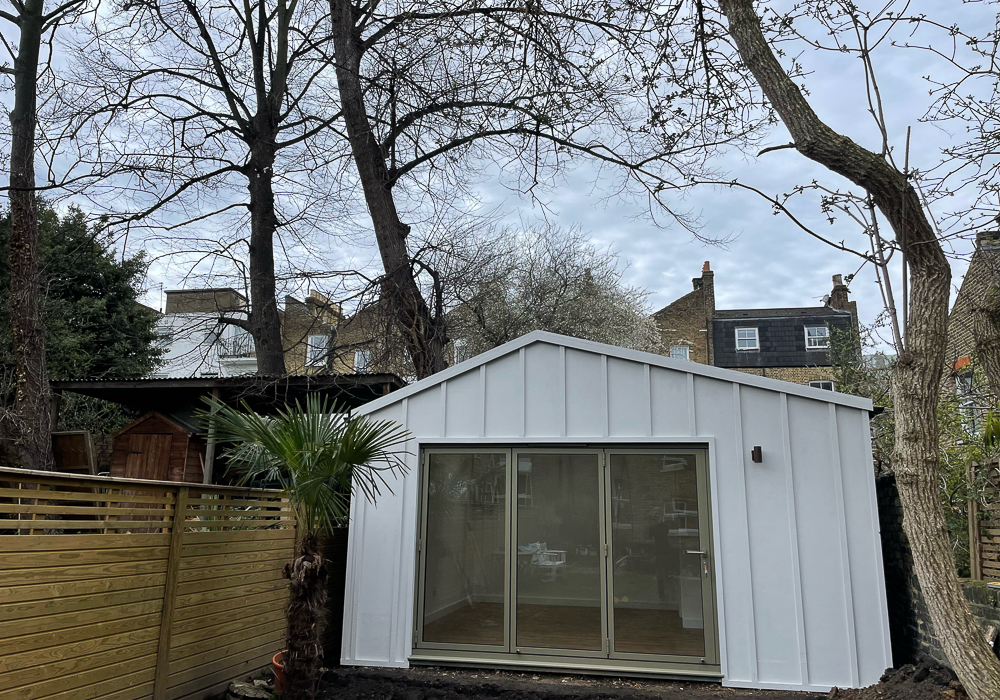
Light-filled garden pottery studio
Garden rooms have long been popular as creative spaces, as they can be tailored around the unique requirements of the artist. Doors, windows and skylights can be positioned to create a naturally light workspace and offer views of the garden beyond, which can spark creativity.
The studio has an asymmetrical roofline with skylight creating a light workspace. A storeroom has been designed in a way so it can become a shower room in the future.
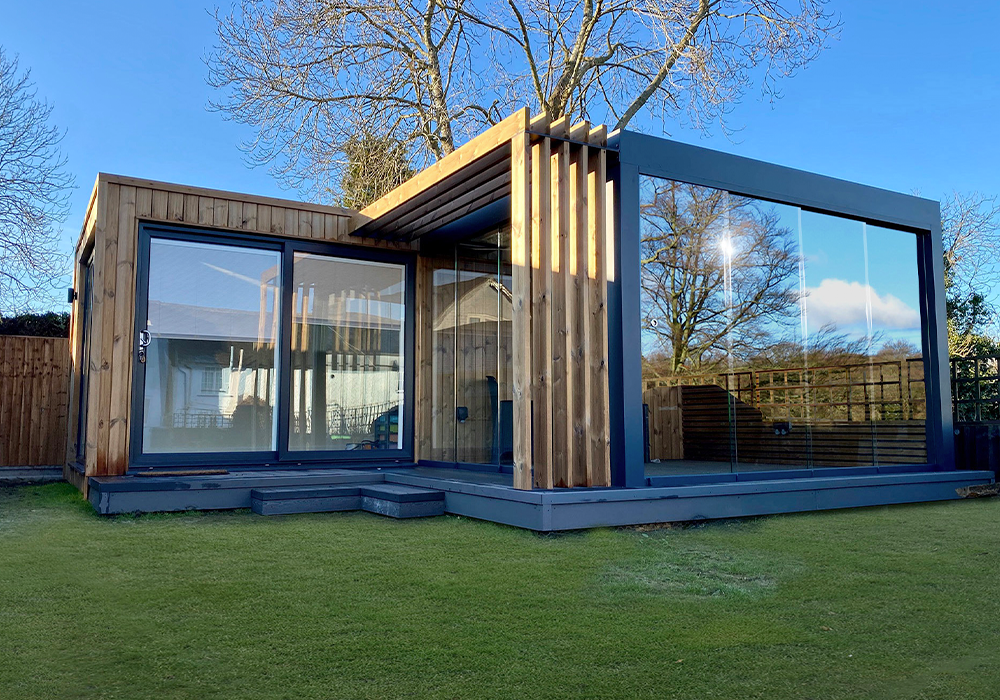
Garden room & store with glazed pergola
The owners of this stylish building have nailed inside-outside living vibe with this garden office/art studio with a contemporary pergola that features a retractable roof and windows.
The insulated room has been divided into two to create an office/art studio and a secret storage room.
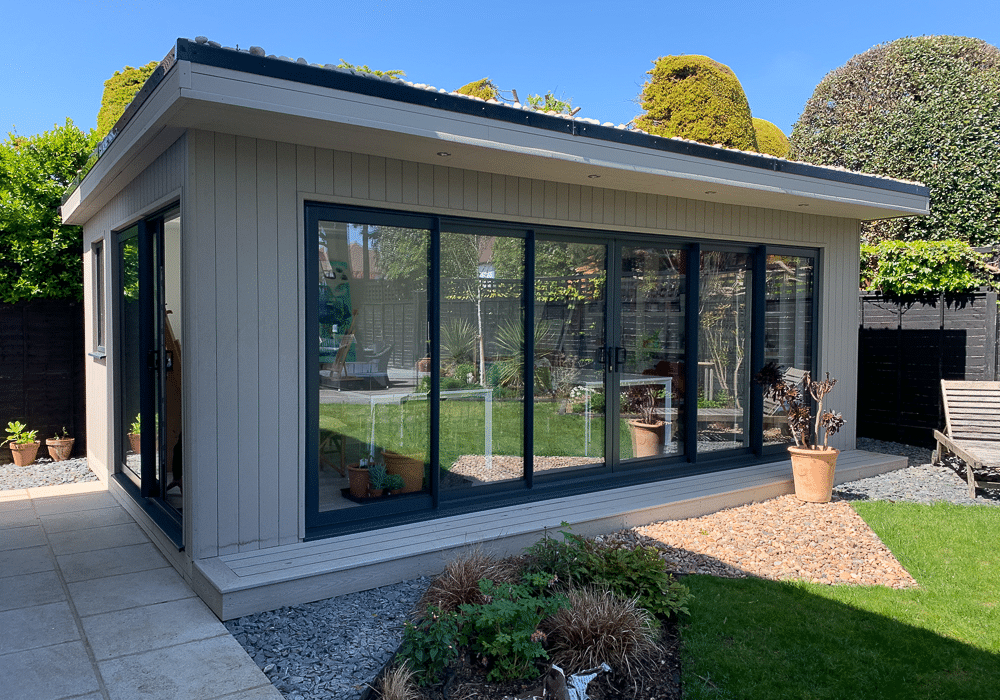
Urban Escape Studios
If you live within a 40-mile radius of Brighton and are looking for a contemporary garden room, you will want to look at Urban Escape Studios’ work.
Urban Escape Studios feature a low-maintenance engineered wood cladding ToughWood™, which is available in 6 finishes. You can also choose Cedar, or Shou Sugi Ban finishes.
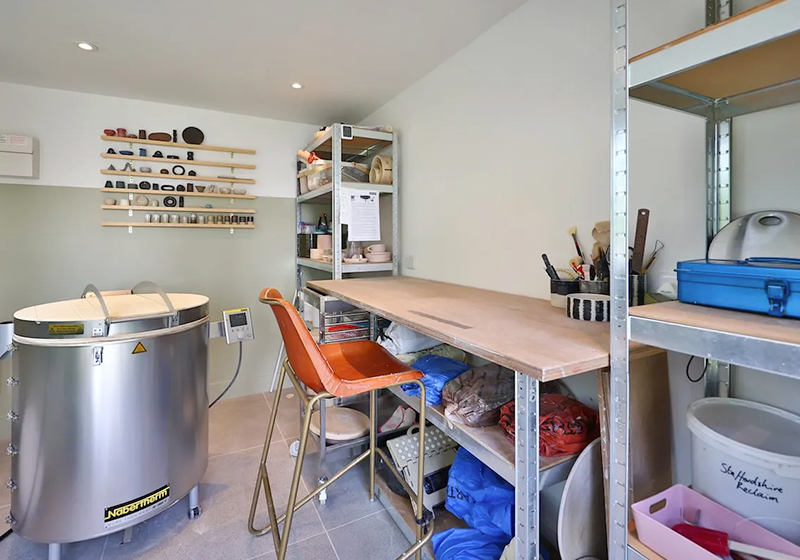
Garden pottery studio
Fully insulated garden pottery studio by Miniature Manors. The specification includes an easy to clean tiled floor and an emergency stop button for the kiln.
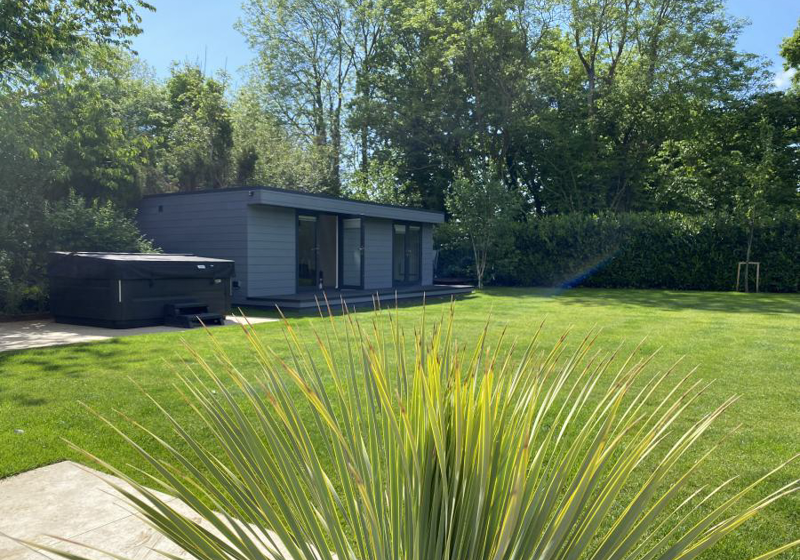
One garden room building designed for two uses
Adding a garden room building that serves more than one use is growing in popularity. This project by Garden Spaces is an excellent example of this approach. One well-designed garden building has been divided internally to create a home gym, a hobby room and a shower room.
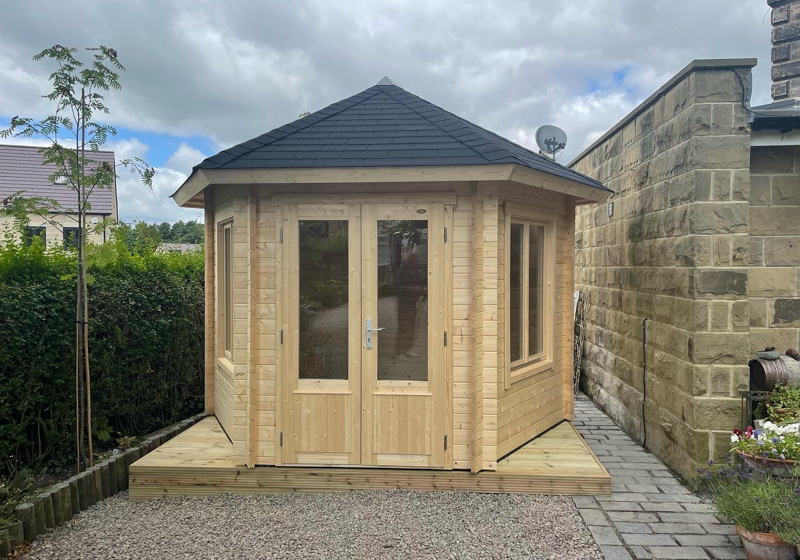
Hexagonal garden hobby room
An insulated log cabin is a good alternative if your budget doesn’t stretch to a multi-layer garden room building. Hargreaves Garden Spaces offers insulated log cabins alongside their higher spec garden room buildings. They have recently installed this hexagonal log cabin design that their client is going to use as a hobby room.
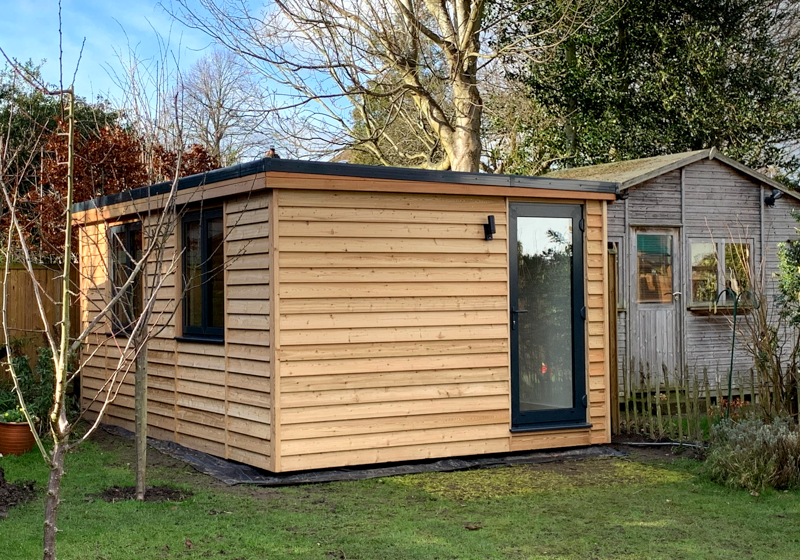
Contemporary offices customised to your needs
Timeless Garden Rooms can customise the size and layout of their contemporary range to your needs. They offer all inclusive pricing so you know where you are with your project cost.
Examples in this article are being used as home offices and a hobby room.
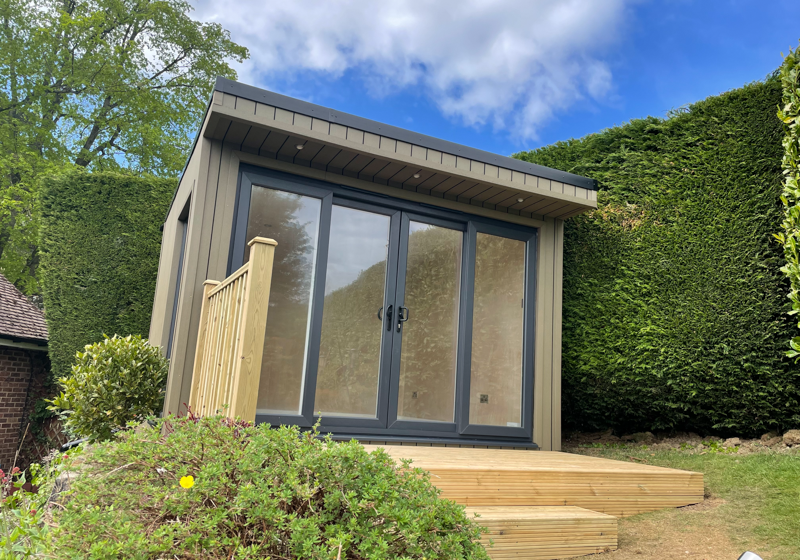
Art studio with composite cladding
3.5m x 3m art studio with low maintenance olive green composite cladding by Hargreaves Garden Spaces, it has been designed to overcome a sloping site.
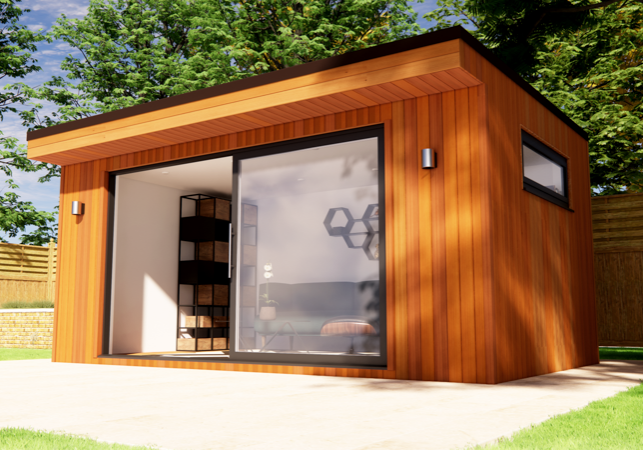
Pre-designed garden rooms
A pre-designed garden room is a good option if you are looking for a well-specified building with a quick, simplified purchase process. They are a good choice if you want to quickly create a home office, gym or art studio.
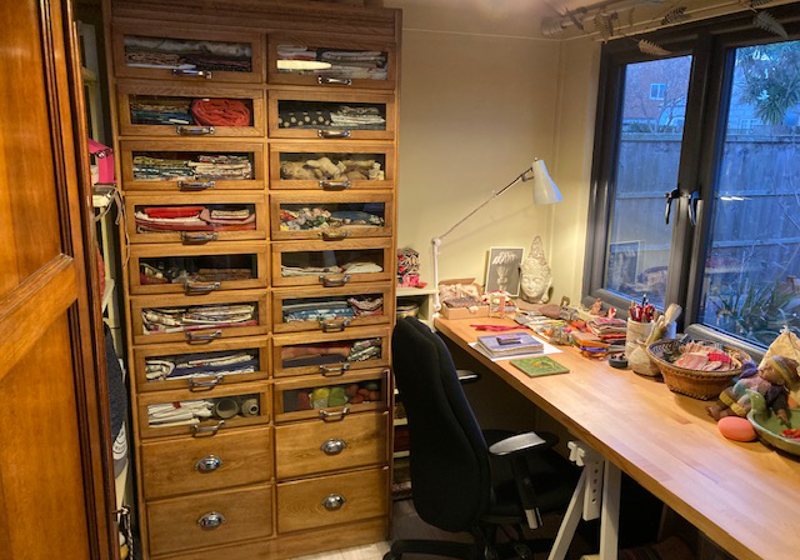
Insulated sewing room
4m x 3m garden sewing room that is insulated for comfortable year round use. Tailored to the clients requirements by Timeless Garden Rooms
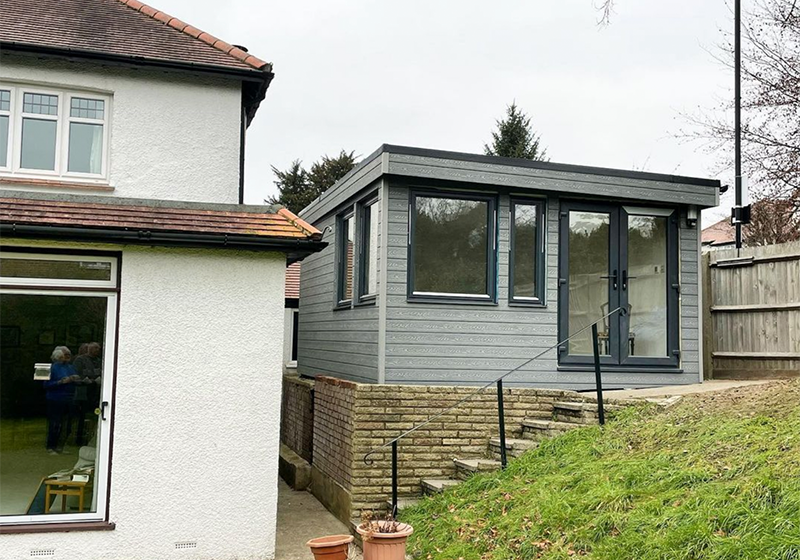
Light grey composite art studio
This art studio by Garden2Office is a great example of a garden room with composite cladding which will keep its appearance without maintenance.
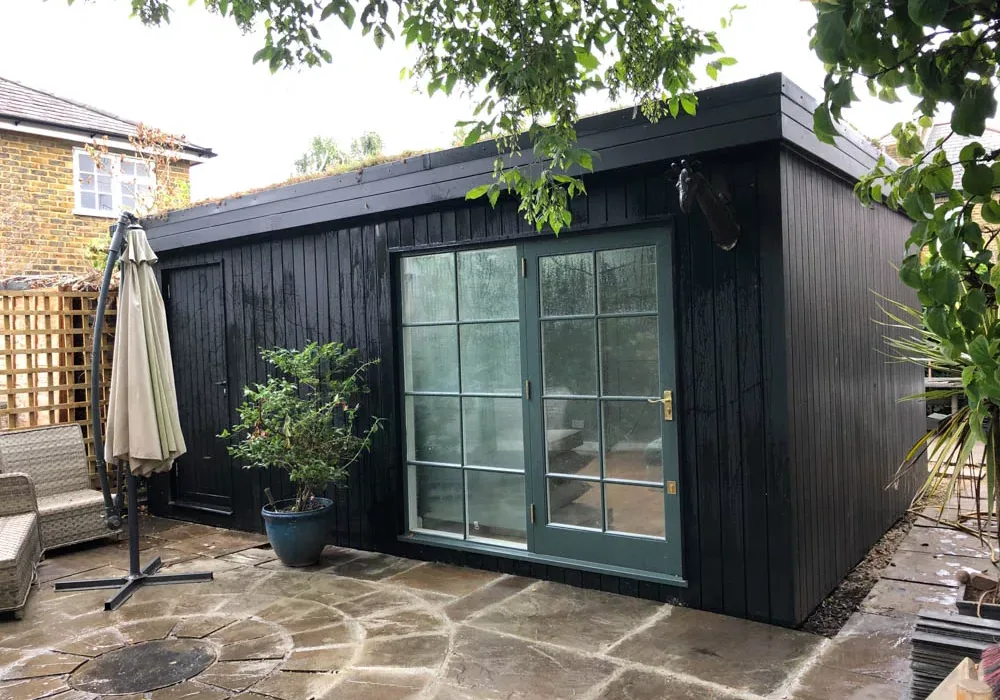
Multifunctional L-shaped garden room
This L-shaped garden room by Garden2Office has been divided up to create an artists studio, extra living space, a bathroom and a storage shed.
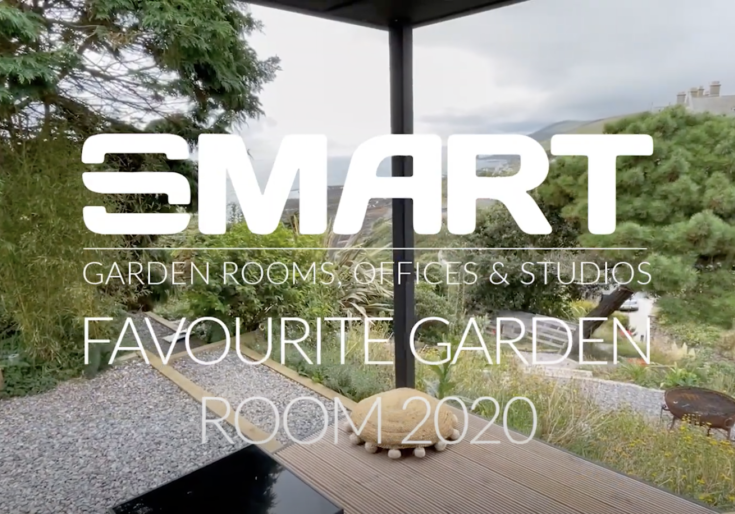
SMART garden room of the year
Chosen as Smart Modular Buildings as their favourite building of 2020. This Affinity garden room with covered seating area offers its owners panoramic views. Fully insulated for year-round use it has been designed as a craft studio.
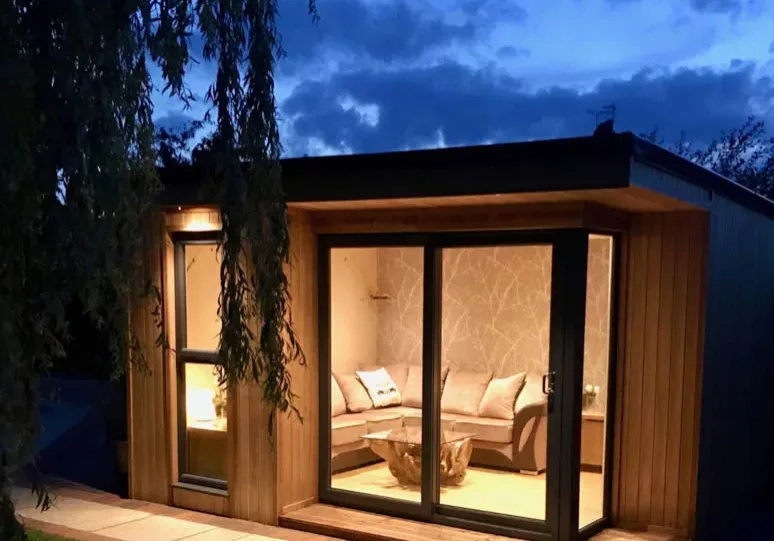
Crusoe Garden Rooms on ‘Cocooning’
Crusoe Garden Rooms share how their buildings can be tailored to create your ideal ‘cocooning’ space.

Multi-room garden rooms
Is one new room enough for your needs? Maybe you need a home office but would like your own gym or music room too. Well, Modulr Space have a solution.
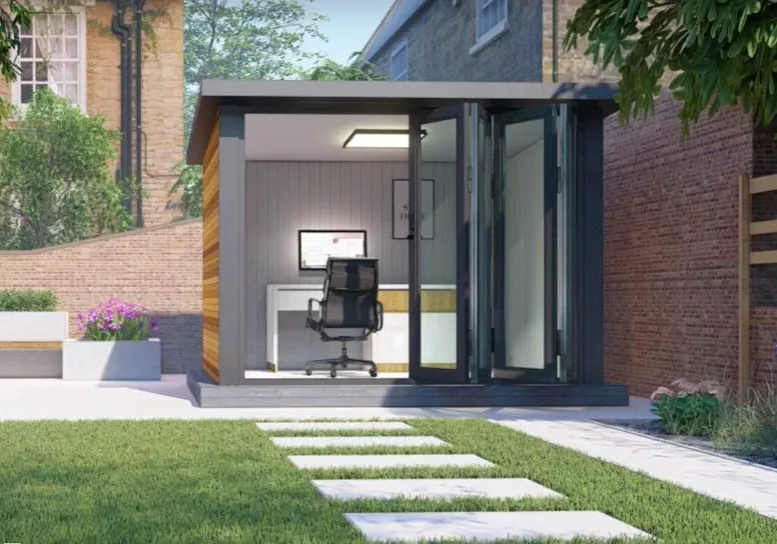
Box Office by Warwick Buildings
The Box Office by Warwick Buildings is a self assembly garden room. Offering you many of the benefits of self-building mixed with the peace of mind of using a core structure built by the professionals.
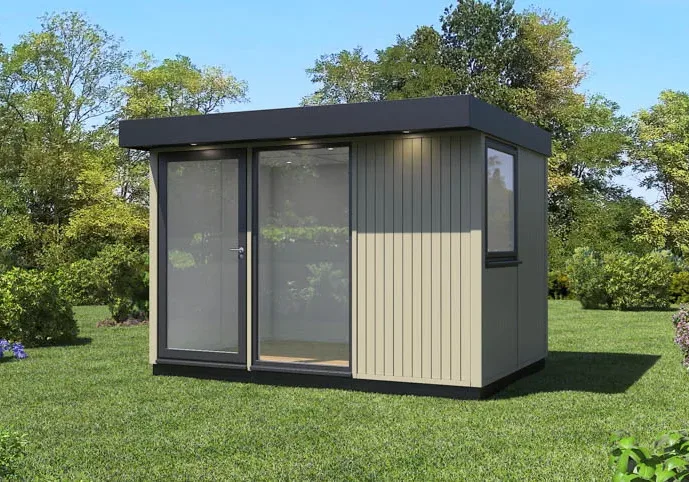
SMART Evolve Range
The Evolve Range by Smart Modular Buildings mixes contemporary detailing with stylish painted exterior cladding
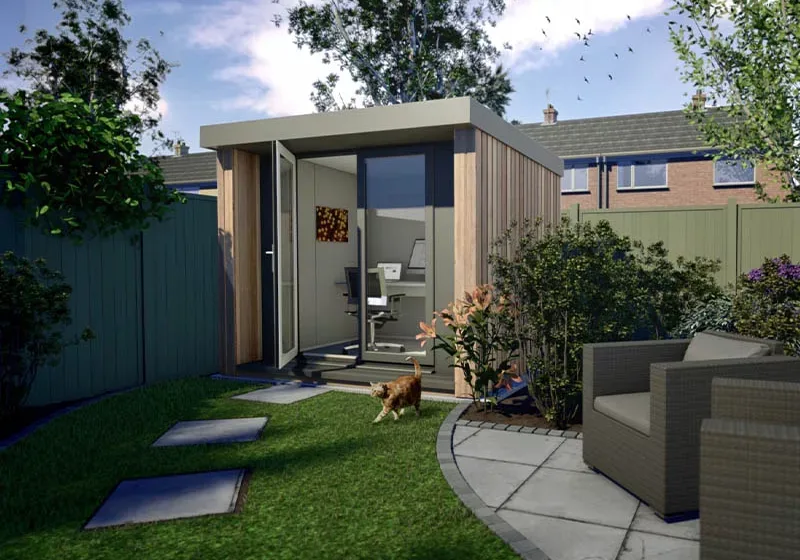
Office Pod by AMC Garden Roms
2.7m x 2.5m Garden office pod by AMC Garden Rooms ideal for the home worker, artist or creator. Designed for comfortable year-round use.
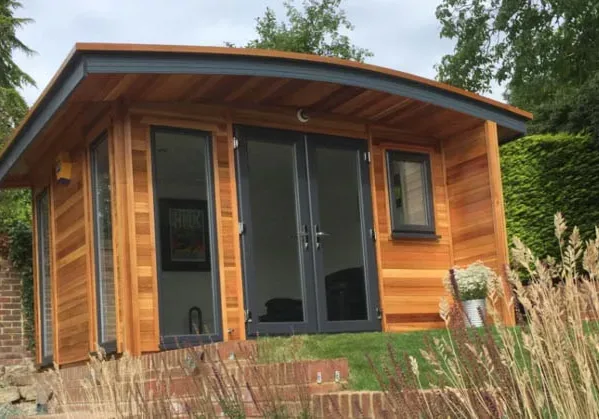
Garden room with curve appeal
Warwick Building offer several styles of garden rooms. One of our favourites is their Curved Range. The gently curved roof stands out in a market of flat roof, cubist designs.
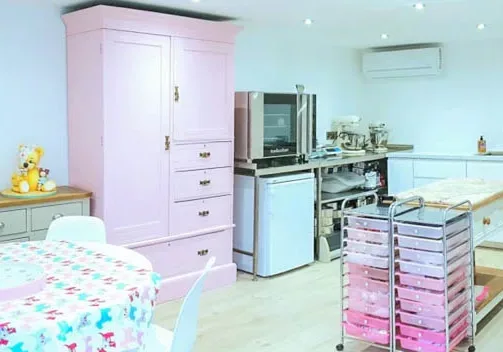
Professional cake making & decorating studio in the garden
This wonderful project by Swift shows how a professional cake making & decorating kitchen can be set up in a garden studio.
